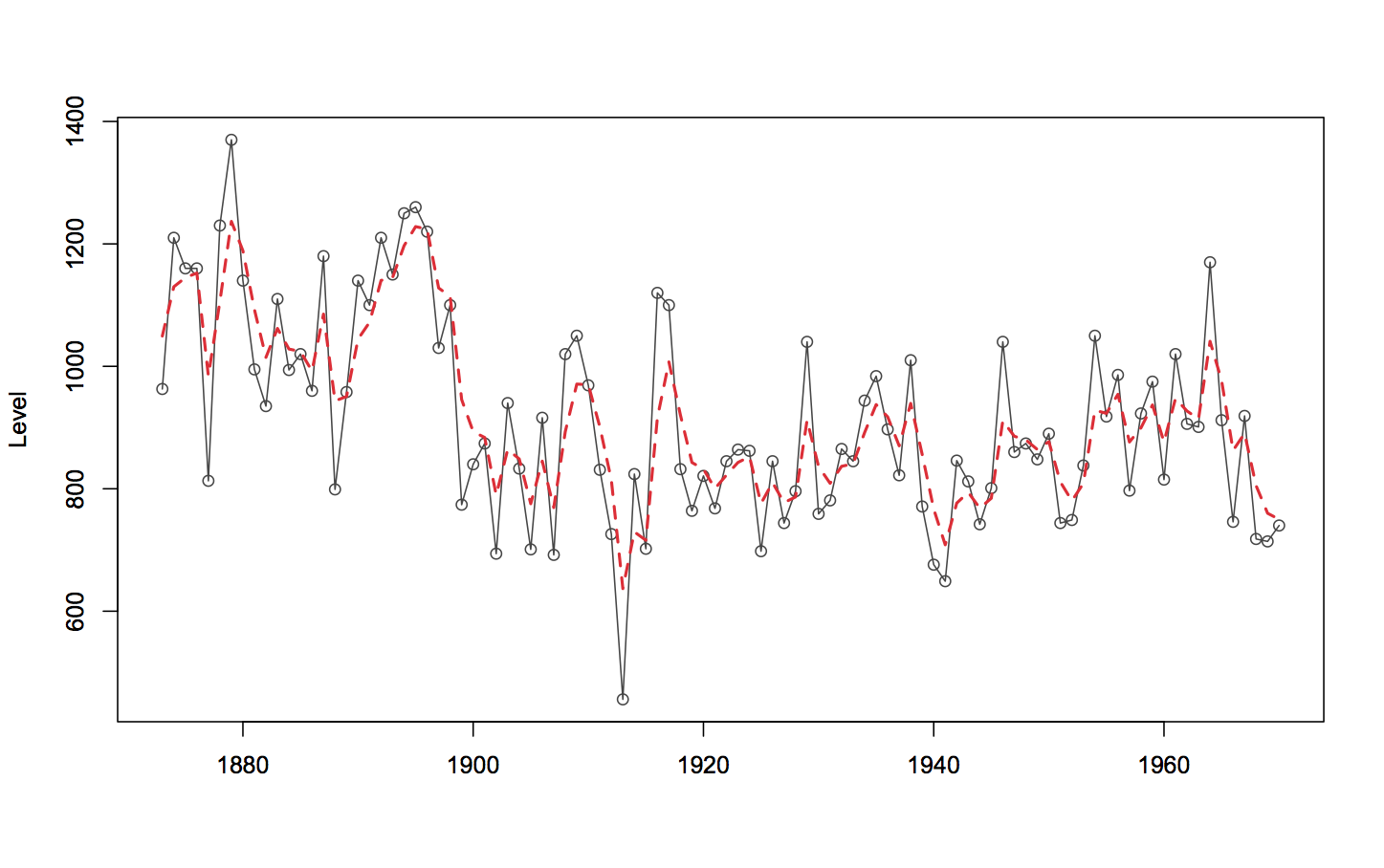Maths projects
Dynamic Linear Models - Jonathan Cumming
Description
A time series is a sequence of observations of a quantity made over a period of time. Examples of time series could include air temperature measurements at a particular location, a patient’s blood pressure, house prices in Australia, annual milk production in the USA, etc. Time series data can exhibit a variety of interesting features such as trends, cyclical variations or seasonality, as well as the random variation we might expect from observing and random phenomenon. Modelling time series data and their features is essential to gain an understanding of the historical behaviour of the data as well as to develop a model that can generate forecasts for the future. Due to their prevalence of time series data, there are a wealth of appropriate statistical methods to consider, but in this project will focus on one in particular — the dynamic linear model (DLM).

Annual observations of the Nile river level (black) with fitted DLM values (red)
We can think of a dynamic linear model as follows. Suppose we make a series of t observations, and we call these y1, y2, ..., yt. We can assume that each of these observations was made with error, and so is a noisy realisation of the unknown 'true' values θ1, θ2, ..., θt. The values (θ1, θ2, ..., θt) are known as the state variables and our observations are just linear combinations of the state variables with the observational error. It is the state variables that represent the behaviour of the underlying system, and in a DLM they vary over time as a linear function of the preceding states plus some random variation. In the case where each state depends only on the previous state, we can illustrate the DLM with as the graphical structure below:

Dependence structure for a simple DLM
In this project, we will study both the methods of dynamic linear models and the practice of using DLMs to model real data using R. Further topics of study include polynomial growth models, nonlinear models, modelling seasonal effects, and Bayesian approaches to dynamic linear models.
This project has a focus on statistical methodology and data analysis. Familiarity with the statistical package R, statistical concepts and models, and data analysis are essential.
Prerequisites/Corequisites
Statistical Methods III, Bayesian Statistics III/IV
Further information
- General reading on related topics: state space models, time series, ...
- West and Harrison. Bayesian Forecasting and Dynamic Models. New York: Springer Verlang, 1997.
- West, Harrison, and Migon. “Dynamic Generalized Linear Models and Bayesian Forecasting.” Journal of the American Statistical Association 80 (1985): 73 - 97.
- Petris, Petrone, and Campagnoli.
Dynamic Linear Models with R . Springer Verlang, 2009. (preprint available online)